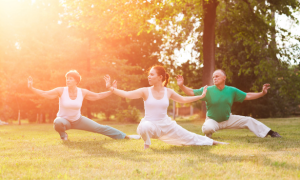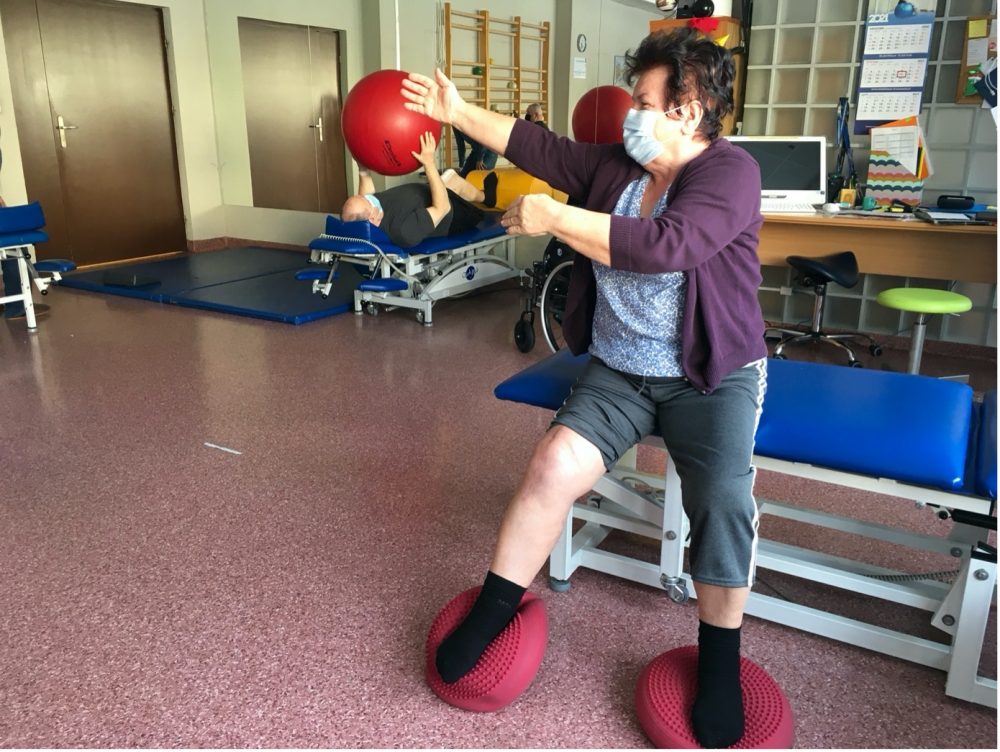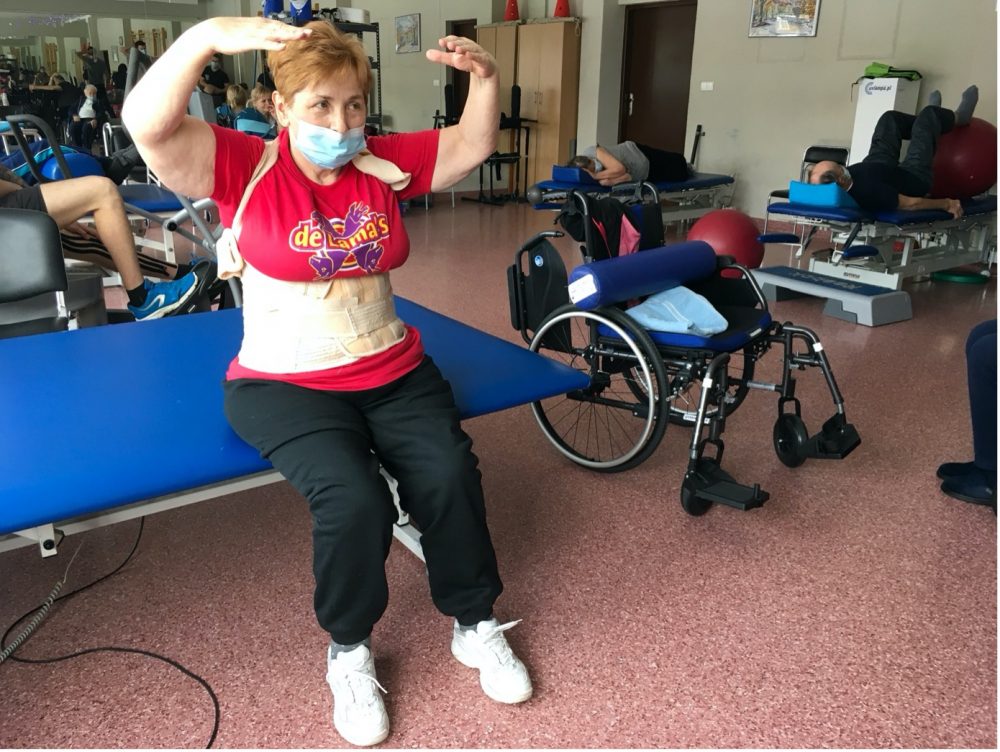The use of Tai chi as sensorimotor exercises

29/01/2021
Dr n. med. Grzegorz Mańko, D.O.
Introduction
More and more often we are looking for methods of therapy that will quickly relieve pain, increase our efficiency and at the same time improve psychophysical comfort. This is the field of activity of Physiotherapy, Physical Training, Psychology and other disciplines widely related to patient treatment. Standard Physiotherapy in the traditional model does not necessarily face this task. The model, which is well known to us, widely promoted in health care units, increasingly imposes the implementation of various standards, and thus creates potential limitations. Therefore, we are constantly looking for new solutions that would allow the implementation of tasks related to the fund, and at the same time serve the patient with dignity, increasing his efficiency and quality of life. Activities that will be learned by the patient will also serve him in his everyday life. Currently, special methods of physiotherapy and sensorimotor exercises are often used in hospitals and rehabilitation centers.
Sensorimotor exercises
Sensorimotor exercise works by stimulating reflex neuromuscular control mechanisms. They affect the correct alignment of body segments in relation to each other. Correct body posture in three-dimensional space is possible thanks to the efficient operation of deep sensation receptors (proprioreceptors), which are disturbed as a result of injuries of the musculoskeletal system or diseases of the nervous system. In such a dysfunction, nerve impulses incorrectly transmit information to the central nervous system about the body’s position in space, or not at all. The purpose of introducing a set of sensorimotor exercises is to rebuild and strengthen proprioception, which will cause the patient’s movement apparatus to perform complex motor tasks in a more coordinated manner. The exercises involve gradually increasing the load on the sensorimotor system as long as a controlled and safe equivalent response is obtained. The basis of the therapy with the patient is the use of a large amount of balance exercises and maintaining the body in different positions. Exercises are performed with and without eye control. They should be conducted in static (maintaining a stable body position) and dynamic conditions (maintaining a stable body position during movement or throwing off balance), we start with exercises in stable positions, gradually moving to more and more unstable. Such action increases the load on the stimulated patient and the level of difficulty of the movements performed. We use a flexible base in the form of mats or inflatable pillows as well as balls for the exercises. The reduced support area is obtained by performing exercises while standing with one leg or in low positions by leaning the weight of the body on the hands or forearms. Properly transferred body weight promotes the increase in impulsion from the receptors of deep feeling and stimulates the equivalent mechanisms. Various techniques of sensory stimulation stimulate specific types of receptors, thanks to which a response is obtained in the form of changes in the tone of muscles and periarticular tissues. The purpose of the stimulation is to enhance the reflex stabilization of the joint. Positive stimulation causes regeneration of damaged receptors or their functions being taken over by other receptors. Thanks to exercises, the locomotor system works in a more coordinated manner and enables better and, above all, safer functioning in various conditions and activities of everyday life. The purpose of the exercises is also to restore proper muscle balance. This disturbance of the cooperation of individual muscle groups leads to chronic overloads, which in turn lead to degeneration of the joint surfaces and chronic pain. Chronic tension also contributes to the activation of inflammatory processes more easily.
In addition to restoring the proper function of deep sensation receptors after an injury to the capsulo-ligamentous apparatus, sensorimotor exercises are commonly used in motor preparation for physically active people and athletes at various levels of advancement. Conducting appropriate sensorimotor exercises gives the opportunity to better prepare for increased physical activity during the holiday season (seasonal activities) or sports in various disciplines. Better control of the position of your own body in three-dimensional space makes it possible to learn new movements much faster. Sensorimotor exercises also contribute to reducing the risk of injury by accelerating the response to dynamic changes in body position. It turns out that a large number of problems related to damage to the capsulo-ligamentous apparatus result from biomechanical disorders related to the incorrect operation of deep sensation receptors. This type of exercise, Tai chi among them, is very well accepted in this health sector.
Tai chi
Tai chi is a simple, non-invasive and complete system of exercises that affects a person as a coherent whole. As a result, it brings benefits not only physical, but also mental and spiritual.
The flexible and smooth movements in Tai chi exercise affect the bones, muscles and joints. During exercise, internal organs are also stimulated. Thanks to Tai chi sets, you can gain energy, well-being and harmonize with the environment without leaving your home. The exercise program based on the Eastern Movement Arts offers a variety of possibilities through a wide range of exercises, from the simplest to the very complex. However, the profile of the hospital patient community is gradually changing and the majority of people who need help in the simplest activities of life begin to dominate. Therefore, we must ensure that the entire activity program meets their needs. The exercises should be adapted to people using crutches, walking frames and wheelchairs. We are looking for a form of movement suitable for everyone, including those who can only stand for a short time and those who cannot stand at all. The exercises should be energizing, not exhausting, which is why they are supposed to be pleasant and heal at the same time. Traditional exercise is often painful and demotivating. In contrast, Tai chi is a system of relaxing and fluid meditation movements. Harmony between the different parts of the body is visible, as well as the positive relationship between the body and its surroundings. The exercises are performed paying special attention to the natural but synchronized pattern of breathing. When performing traditional gym exercises, we rarely pay attention to breathing, often perceiving breathing as a natural body reflex. Since the level of chi energy and its circulation around the body is controlled by the brain, there is no need to perform hundreds of repetitions of heavy exercises in order to improve and maintain psychophysical well-being. We will achieve the effect much more pleasantly and faster in the form of activating muscles, joints and oxygenating the body. Tai chi is not only a set of exercises that affect the body, but also the mind and spirit. This approach opens up completely new horizons for the concepts of physical exercise. We can observe the sitting form of Tai chi more and more often.
The mystery of all Chinese martial arts has led to the creation of many legends about the Tai chi chuan style, originally used for self-defense. Probably the prototype of the style were the observed movements of animals. Regardless of history, it has become a popular form of exercise in China and around the world. Preventive and health benefits have also become the most important aspect of the system. It has been recognized for years that these exercises cause the Chi energy to flow in the meridians as they are performed. It was believed that those who achieved balance between body, mind and breath have three balanced regions called dan tien. The lower dan tien is located between the pubic bone and the navel. The middle one is around the solar plexus and the upper one is around the pineal gland. The individual organs and their energy supply are assigned to the Dan tienes.
They are responsible for vital functions, metabolism and mental activity. When practicing tai chi, we concentrate all our efforts and thoughts on the three dan tienas. As a result of the growing interest in alternative medicine, including Tai chi, numerous studies have been conducted. They were aimed at authenticating the results of these exercises. It has been proven that Tai chi regulates blood pressure, improves metabolism and the level of oxygenation. It also makes the tissues flexible and contributes very well to the improvement of the sense of balance. It is effective in the prevention of osteoporosis, degenerative disease and the prevention of falls. Although it is difficult to document all the noticeable effects, these exercises are applicable in all medical specialties. The results always emphasize the increase in psychophysical comfort.
Each of the short sets begins with deep breaths aimed at oxygenating the whole organism. The short session, in addition to strengthening the muscles and making the joints more flexible, also has an impact on internal organs. Each session ends with relaxing exercises and possibly stimulation of acupressure points. The movements of the exercises are smooth, involving a lot of rotations, and therefore good from a functional point of view. Movement is primarily in harmony with the breath and is supported by conscious sensory control. All movements are generated from the center of the body (the dan tien point in the area below the navel). The exercises are functional while maintaining postural stability.
Picture 1. Shows a patient after arthroplasty of the knee joint, treated in the Center for the Rehabilitation of the Musculoskeletal System “Krzeszowice” SP ZOZ. The patient exercises the elements of the Tai chi set while sitting. / www.rehabilitacja-krzeszowice.pl

Picture 2. Shows a patient after spinal cord surgery in the thoracic section, treated at the “Krzeszowice” Center for the Rehabilitation of the Musculoskeletal System SP ZOZ. The patient exercises the elements of the Tai chi set while sitting. / www.rehabilitacja-krzeszowice.pl

It can be seen that Tai chi exercises can be widely used in hospital units, even in the most injured and stressed patients. Despite the presence of comorbidities. The exercises are highly modifiable, such as the sitting option presented here. Thanks to the involvement of breathing and concentration of the mind, they will prove useful in cardiological, neurological, orthopedic patients and, above all, now in post-covid patients.
References
1. Mańko G, Ziółkowski A, Mirski A, Kłosiński M: effectiveness of selected Tai Chi exercises in a program of strategic rehabilitation aimed at improving the self-care skills of patients aroused from prolonged coma after severe TBI; Med Sci Monit 2013; 19:767-772.
2. Mańko G, Kruczkowski D, Tomasz Niźnikowski T, Perliński J, Chantsoulis M , Pokorska J, Łukaszewska B, Ziółkowki A, Marek Graczyk M, Starczyńska M, Jaszczur-Nowicki J: Effect of programmed physical activity measured with levels of body balance maintenance. Med Sci Monit 2014;20: 1841-1849.
3. Mańko G, Rasmus A, Łukowicz M: Wpływ treningu sensomotorycznego na jakość życia pacjentów z przewlekłym zespołem bólowym odcinka lędźwiowego kręgosłupa: Acta Balneol, TOM LVII, Nr 1 (139);2015:40-47.
4. Mańko G, Kocot I, Pieniążek M, Sosulska A, Piwowar H, Assessment the risk of falls versus postural stability of the elderly, using a stabilographic platform: Security Dimensions: 2016, nr 20, s. 111-130.
5. Sobański G, Mańko G, Sitkiewicz A, Jekiełek M, Sikora A, Nitecka E, Chrościcki P, Ocena skuteczności program rehabilitacji zawierającego techniki Tai-Chi w leczeniu zespołów bólowych kręgosłupa lędźwiowego w porównaniu z programem standardowej rehabilitacji. Acta Balneol, Tom LX, Nr 1(155); 2019 57-61.
6. Mańko G, Pieniążek M, Tim S, Jekiełek M; The effect of Frankels Stabilization Exercises and Stabilometric Platform in the Balance in Elderly Patients: A Randomized Clinical Trial. Medicina 2019: Vol.55, nr 9 art.no 583, s 1-13.

